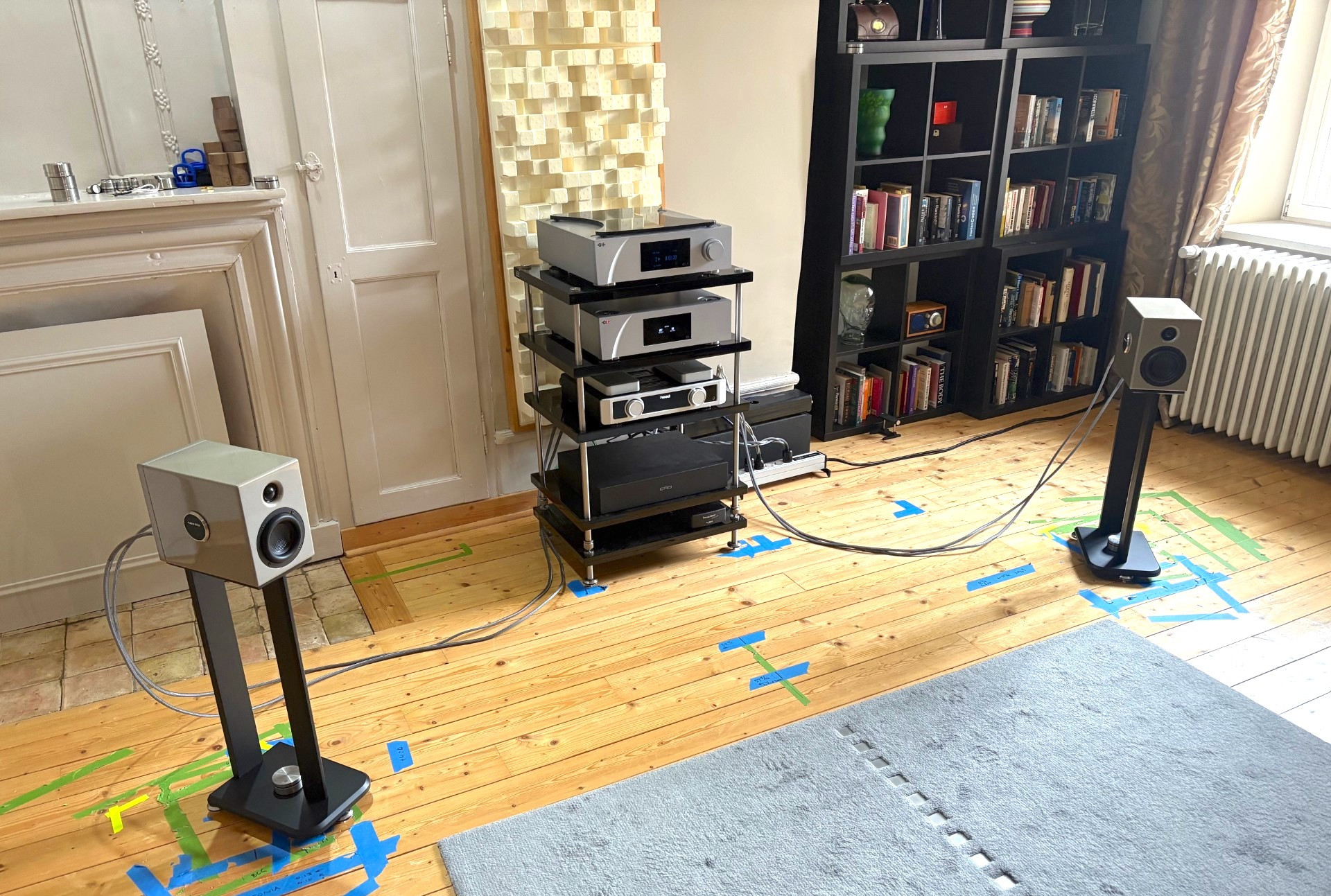
Let’s take that compact cabinet for starters. The front and rear panels are machined from substantial, 19mm HDF. The side panels are built from the same HDF material, but only 12mm thick, reducing mass and increasing internal volume. The front baffle, carcass and rear panel are all decoupled from each other. Each side panel carries a viscoelastic damper, the polymer layer tensioned against the HDF to increase its efficiency and dissipation. Taken together it’s a choice of materials and construction that minimises the influence of and the cabinet’s vulnerability to stored energy, further building on the benefits of the inherent stiffness in such small panels.
The bass driver is a special, ultra-long throw design from French company Kartesian – in keeping with Neodio’s local component/low carbon footprint sourcing policy. Despite the tiny 5-litre cabinet volume, Neodio claim that Lilli has usable output that extends as low as 50Hz. To achieve that, the reflex port needs to be 200mm in length – which helps explain the unusual cabinet proportions. It also helps explain the ruinously low 82dB sensitivity – although more on that later. What is less obvious is that the small diameter bass driver also leads to reduced depth that, by careful mounting of the tweeter allows physical time-alignment of the drivers within the depth of the vertical baffle. Combined with the close proximity of the drivers and a carefully engineered, second-order crossover, that should result in excellent phase coherence. The crossover itself employs a number of damping and decoupling techniques to help minimise mechanical influence and the speaker is internally wired with Neodio’s Fractal 8 cable.
Externally, the diminutive cabinet is painted with a gloss metallic finish in what is euphemistically called Mouse Grey – meaning something that has shades of both beige and grey, along with a metallic hint that’s perhaps suggestive of Titanium. What I can tell you is that it’s a colour that tends to take on and tone with its surroundings. Other RAL colours could be specified with order, but that would incur additional cost. Neodio also offers a matching stand for the Lilli which looks conventional enough but which, rather than welded or bolted metal construction, is glued together from the same HDF material as the cabinet, the goal being a light, rigid and non-metallic structure. Naturally, it can be ordered with Neodio’s excellent Harmonie footers, in place of conventional, M8 spikes.

The Lilli is facing a challenging market place. Not only is it a new entry into a largely moribund market segment, its apparent value, its size and price, will likely give customers serious pause. I’m pretty sure that anybody thinking of dropping upwards of 5K on a pair of speakers isn’t expecting to come home with a pair of these! Yet Stéphane Even is uncharacteristically bullish about their performance, even by his enthusiastic standards. So, given a chance to spend a day in their company, it seemed like too good a chance to miss.

